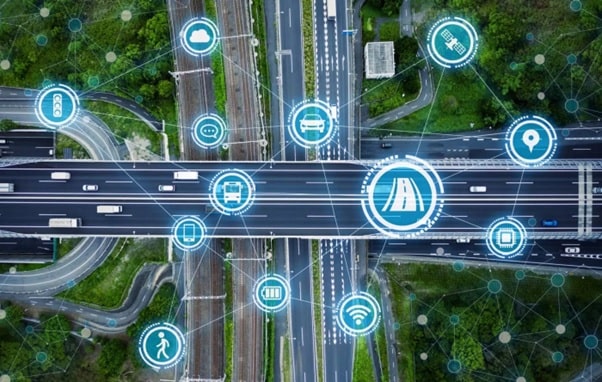Home »
IoT (Internet of Things) Tutorial
Smart Traffic Management Systems: Enhancing Transportation Efficiency and Safety
In this tutorial, we will learn about the Smart Traffic Management System, its benefits, Challenges, and Future Outlook
By Shahnail Khan Last updated : October 03, 2023
Smart Traffic Management Systems have revolutionized urban transportation by using cutting-edge technology and data-driven strategies to address traffic-related issues effectively. Urban computing has become more efficient and safer with the help of these systems which optimize traffic flow, ensure road safety and provide real-time information to drivers. This article will delve into the details of Smart Traffic Management Systems, their components, and the benefits they offer to urban communities.

What is a Smart Traffic Management System?
Smart Traffic Management Systems are a comprehensive suite of technology solutions developed to manage traffic-related issues in urban cities. This is crucial in improving the overall transportation experience by the deployment of advanced technologies and data-driven strategies. Here are the key aspects of these systems-
- Traffic Flow Optimization: Smart Traffic Management Systems use real-time data and adaptive control mechanisms to optimize traffic flow. This is critical in adjusting traffic signal timings, lane assignments, and other parameters, ensuring smooth traffic movement and reducing travel time.
- Safety Enhancement: These systems enhance safety by implementing advanced features such as video traffic detection systems with edge processing capabilities to keep an eye on traffic and detect potential safety hazards.
- Real-time Information: Smart Traffic Management systems provide real-time information to the person driving the vehicle, including updates on traffic conditions, accidents and many more.
- IoT Integration: IoT plays a pivotal role in addressing traffic-related issues. They use digital image processing techniques to check vehicles on traffic signals which enables data-driven decision-making.
Benefits of Smart Traffic Management Systems
Smart Traffic Management Systems prove to be beneficial in many ways. One of the most important benefits is the substantial reduction in traffic congestion. Optimization of traffic flow with real-time monitoring leads to more convenient and efficient everyday journeys. Additionally, Smart Traffic Management Systems prioritise road safety with advanced features such as video traffic detection systems and adaptive traffic control. This ensures a safer road environment, decreasing accidents and improving overall safety.
Furthermore, the time saved as a result of improved traffic flow translates into increased productivity for enterprises and commuters alike, promoting economic growth and prosperity in metropolitan areas. The environmental advantages of less fuel use and emissions also support sustainability and cleaner air, fostering a healthier urban environment.
Challenges and Future Outlook
While Smart Traffic Management Systems offer numerous benefits, they also face challenges that need to be addressed for widespread implementation. Various factors are responsible for this, including cost factors, data privacy concerns and the demand for widespread adoption.
However, the future looks promising for Smart Traffic Management Systems. With the advancements in technologies like Artificial Intelligence, Data Analytics and IoT, Smart Traffic Management Systems are becoming more efficient. With the growing population, the demand for these systems will surely increase.
Conclusion
In conclusion, Smart Traffic Management Systems play a major role in urban planning and transportation management. The deployment of effective solutions makes transportation more efficient, safe, and convenient for everyone. The need to adopt these systems is increasing with the increase in population and traffic challenges. It is crucial in enhancing the urban living experience.
Smart Traffic Management Systems may help cities decrease congestion, increase safety, save time, have a positive impact on the environment, and improve the quality of life for their citizens. The deployment of these solutions also ensures a sustainable future by reducing congestion and emissions.
Advertisement
Advertisement